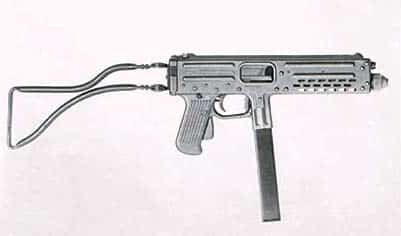Story & Photography by Michael Heidler
After World War II, Italy kept the war-proven Beretta submachine guns in use, and production went on. Future-oriented innovations were sought in vain. Beretta seemed to be without competition—until Luigi Franchi entered the government market.
With minor modifications, the Beretta M38/44 became the M38/49, and the following models remained basically the same wartime model without any outstanding technical innovations. After the death of Beretta’s chief engineer Tullio Marengoni, his successor Domenico Salza took over the work on the submachine guns. He designed the Model 5 with its striking grip safety. A large oblong push button was inserted laterally in the finger groove of the stock and had to remain pressed during shooting. This model was used by the military and police. However, Salza now tried to finally break away from the World War II model and create a modern, inexpensive submachine gun.

While he was still developing the future M12 model, a competitor from his own country unexpectedly pushed onto the market. The arms manufacturer Luigi Franchi S.p.A., founded in 1868 in Brescia, ventured into a completely new field with its LF-57. Until then, the company had mainly produced hunting and sporting guns. But the governmental market seemed to be lucrative, and so the company owner Luigi Franchi developed a new type of submachine gun according to his ideas for his new company department Divisione Sistemi Difensivi. He attached great importance to a simple design and cost-effective production.
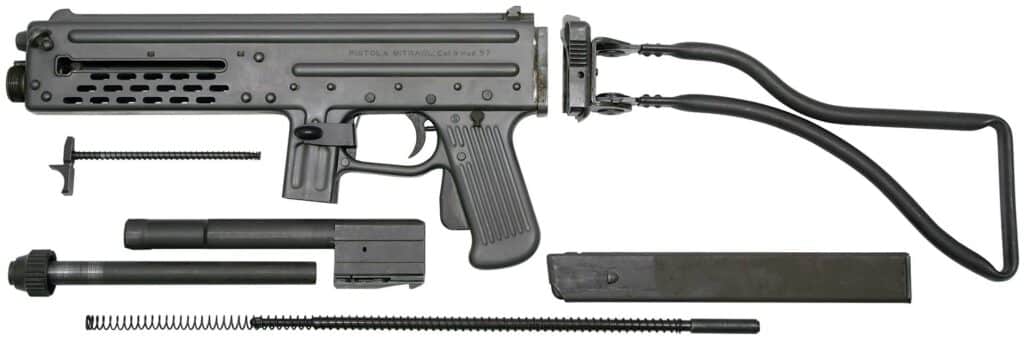
LF-57 Is Born
Already in spring 1956 the first examples of the LF-56 were ready for test and evaluation purposes. Franchi was satisfied with the result; his basic concept worked. After the experiences from the trials had been incorporated into the design, the LF-57 was thus created. The weapon was largely made of formed sheet metal, riveted around a basic block of milled steel. There are no grip plates, because the grip is pressed together with the respective half of the housing from a single piece of sheet metal. The barrel is only fixed in the receiver by a nut screwed on the muzzle. The sight consists of a fixed front sight and a laterally adjustable rear sight zeroed at 50m (55 yards).
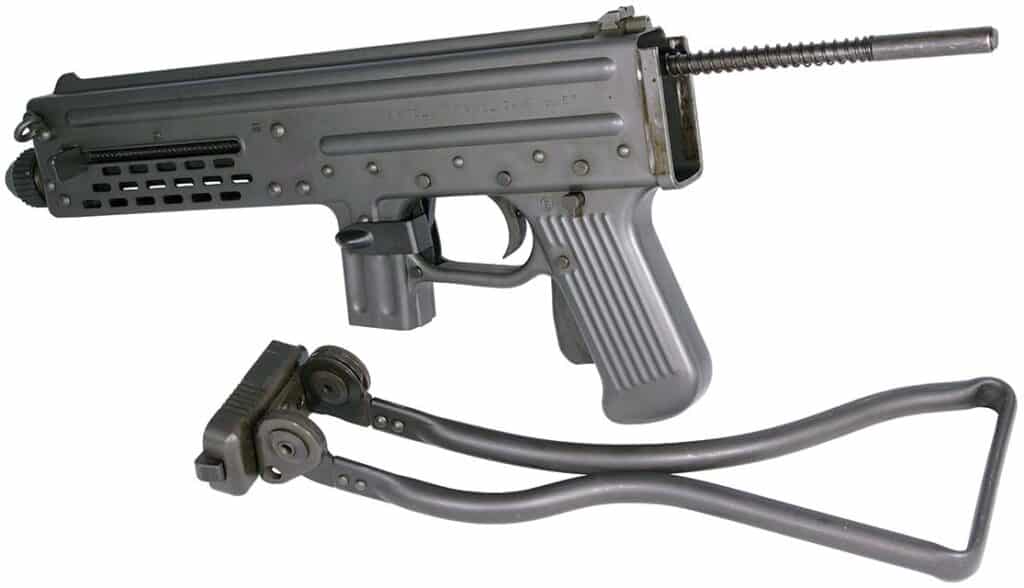
In contrast to many other short submachine guns of that time, the breechblock does not enclose the barrel. Instead, it is shaped like a horizontal “L,” whose main mass moves in the housing above the barrel, and only a small part with an integrated firing pin closes the cartridge chamber. During the loading cycle, the breechblock has a short travel, which makes it possible to shorten the overall length of the receiver. It also increases precision, as most of the breechblock movement takes place near the centre of gravity of the weapon. Due to this feature, the receiver is very slim, but high. At first sight, the weapon therefore looks like a gas-operated gun.
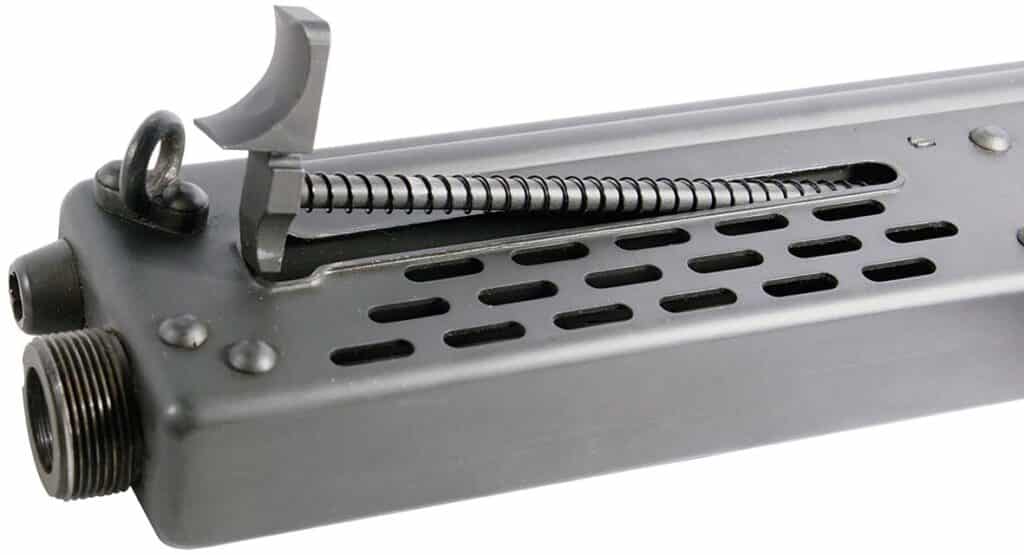
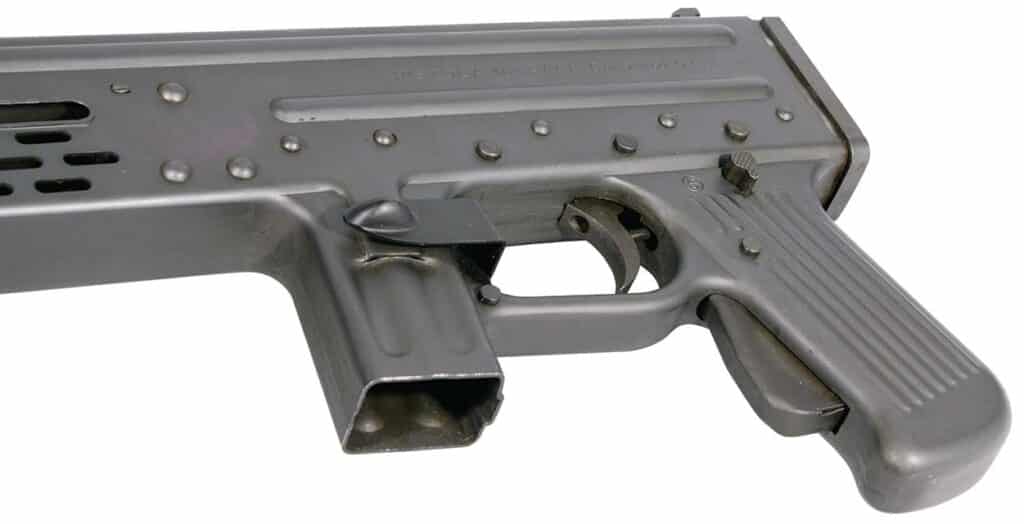
The LF-57 has no manual safety device. Instead, a pressure safety device is integrated in the grip, which blocks the way of the breechblock. The way is only cleared when the hand clasps the handle and presses the safety in. A push button above the grip allows switching between single and continuous fire. The side folding stock is very stable; it does not wobble and offers a good feeling when firing.
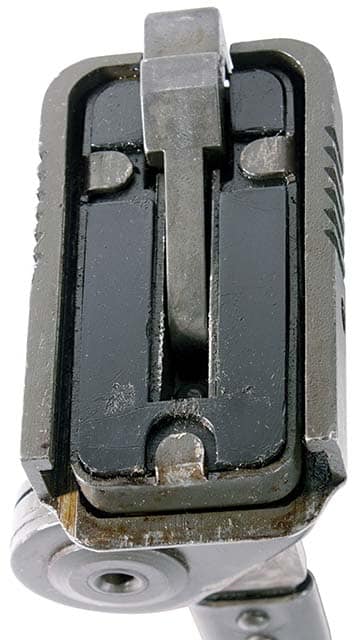
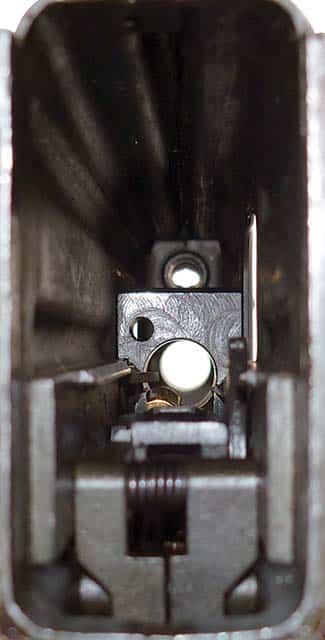
Commercially, the LF-57 was unfortunately not a success. It also remained Franchi’s only submachine gun. The company received one was won in 1962. In the same year, Franchi launched the semi-automatic “Police Model” for the civilian American market, recognizable by the double-barrel length of 406mm. Smaller quantities of the weapon were sold to the Congo, Nigeria and Rhodesia. Interestingly, the sales success of Beretta’s new M12 in Italy was also limited. The weapon was much more sought after abroad. Until 1987, Franchi S.p.A. was run as a family business. Once in competition with Beretta, the company has been part of the Beretta Holding since 1993.
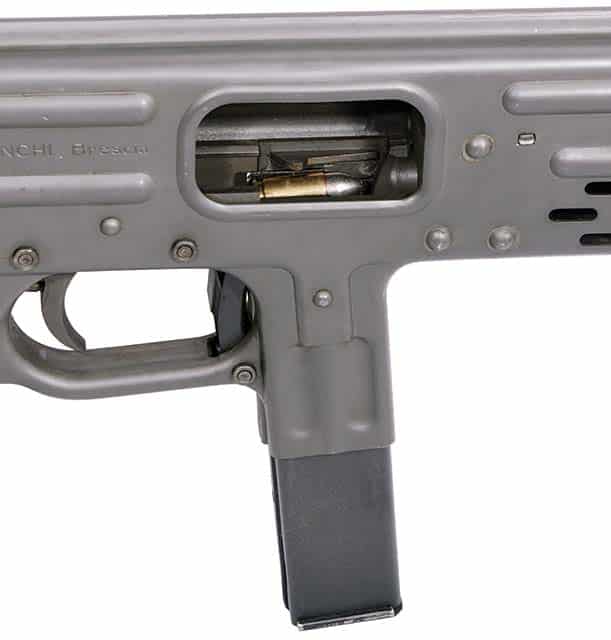
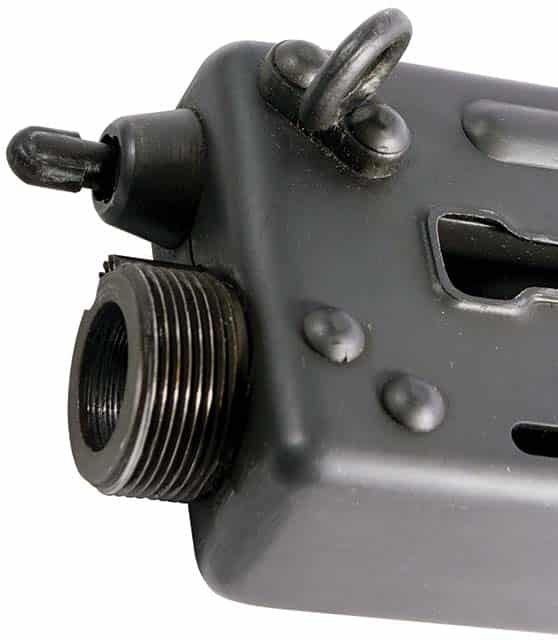
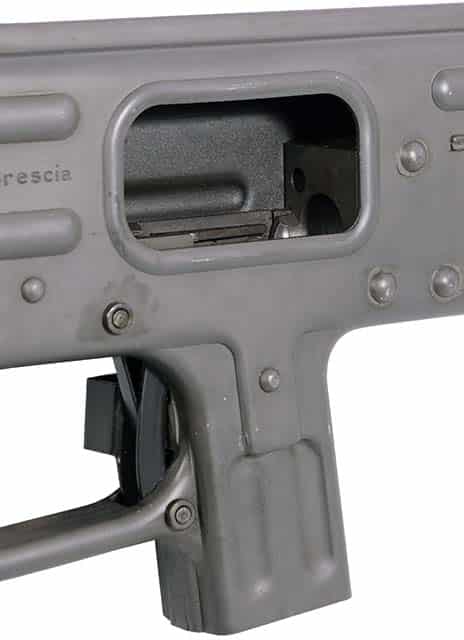
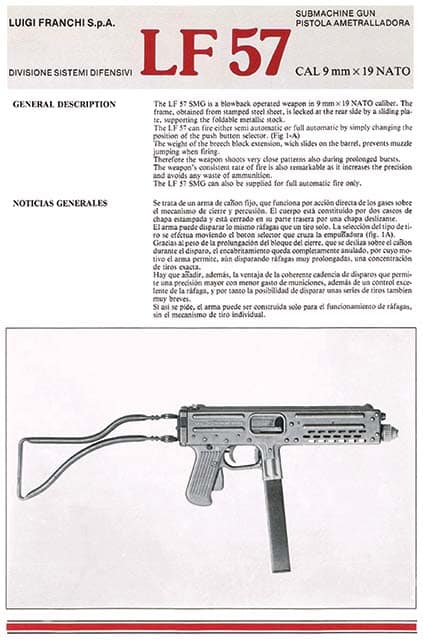
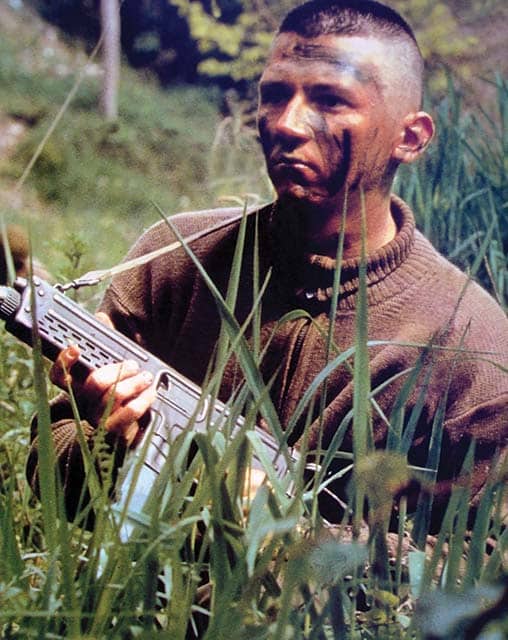
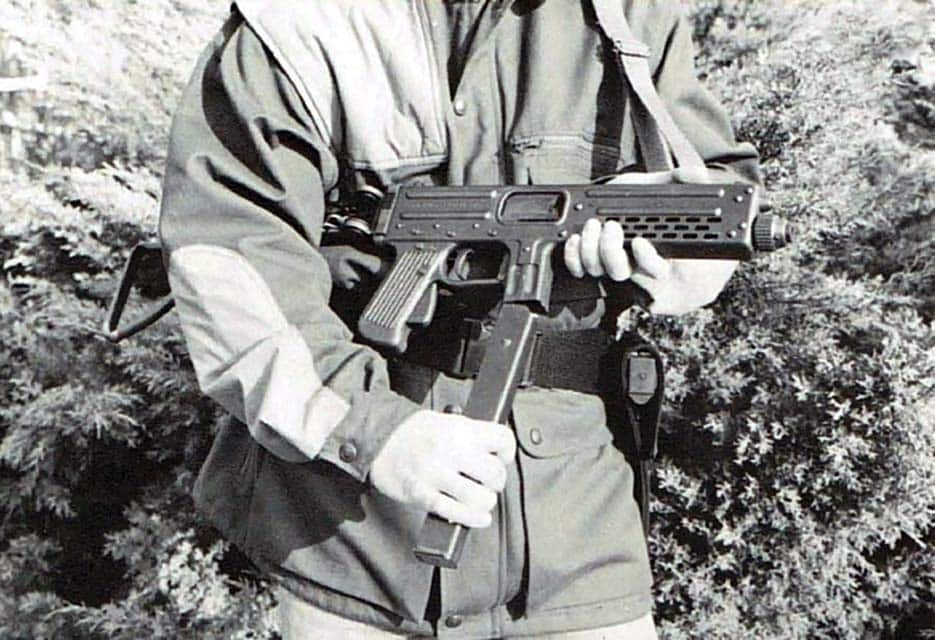
TECHNICAL DATA
- CALIBER: 9x19mm
- LENGTH (stock folded): 420mm/16.53in
- LENGTH (stock extended): 680mm/26.77in
- LENGTH OF BARREL: 206mm/8.11in
- WEIGHT (empty): 3.32kg/7.32lb
- WEIGHT (loaded): 3.82kg/8.42lb
- MAGAZINE CAPACITY: 30 rounds
- RATE OF FIRE: 460 rounds/min
| This article first appeared in Small Arms Review V24N7 (Aug/Sep 2020) |



